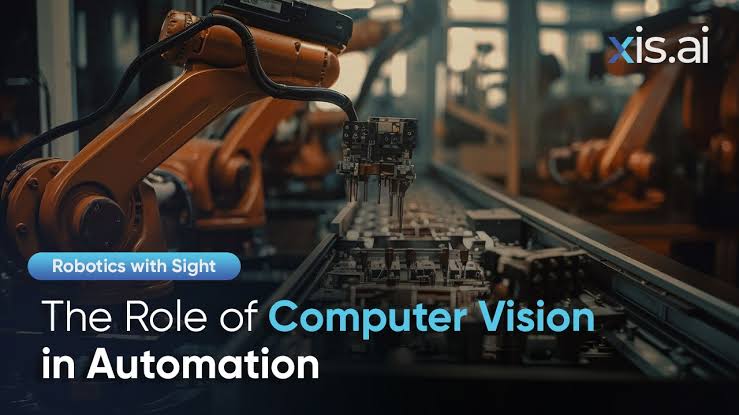Computer vision plays a pivotal role in AI automation by enabling machines to interpret and understand visual data. Explore its applications across various industries, including manufacturing, healthcare, autonomous vehicles, and retail, as well as the challenges and future prospects of this transformative technology.
The Importance of Vision Technology in AI Automation.
Introduction to Computer Vision
Computer vision is a branch of intelligence (AI) that empowers machines to comprehend and interpret visual data from the environment. It encompasses creating algorithms and models that enable computers to analyze images and videos, derive insights and make decisions based on visual cues. With progress computer vision has gained significance in AI automation, fueling advancements across industries. By emulating sight computer vision technologies can streamline processes boost productivity and explore horizons, in innovation.
How Computer Vision Works
Computer vision, at its essence, is all about examining videos. The process typically involves steps such, as capturing images preparing them for analysis identifying features within the images and interpreting those features for decision making. To break it down image acquisition is about using cameras or sensors to gather data. Preprocessing involves fixing any distortions and enhancing important characteristics of the images. Feature extraction focuses on spotting elements like edges, shapes or textures. And finally interpretation is the stage where the extracted features are analyzed to make decisions or produce outputs. Machine learning, especially deep learning models, plays a role in improving these processes by allowing systems to learn from data and evolve over time. The impact of vision in AI automation is significant as it revolutionizes industries by automating tasks that once required human input. Some notable areas where computer vision is applied include.
1. **Manufacturing and Quality Assurance** Computer vision technology plays a role, in manufacturing by ensuring product quality and conducting inspections. Automated systems equipped with vision can identify flaws, measure specifications and verify that products adhere to standards accurately. This technology minimizes reliance on inspections and enhances overall production efficiency.
2. **Healthcare and Medical Imaging** The field of healthcare is undergoing a transformation thanks, to computer vision advancements. These systems enhance diagnostic precision and streamline medical imaging workflows. They can analyze medical scans like X rays, MRIs and CTs to detect irregularities, support diagnoses and even forecast disease progression. As a result healthcare providers can make informed decisions leading to improved patient outcomes.
3. **Self Driving Cars** Computer vision plays a role, in the development of vehicles by enabling them to navigate and interact with their surroundings. The vision systems in these cars process information from sensors and cameras to identify objects, detect obstacles and understand road conditions. This technology contributes to safer and more dependable autonomous driving experiences.
4. **Retail and Customer Experience**: Retailers are utilizing vision technology to improve the shopping experience and streamline operations. For instance automated checkout systems can allow customers to pick items from shelves with their purchases being automatically recorded and charged. Moreover computer vision can assess behavior and preferences aiding retailers in optimizing store layouts and marketing approaches.
5. **Security and Surveillance**: Computer vision finds applications, in security and surveillance by monitoring and analyzing video feeds. These systems can identify activities, recognize faces and track movements enhancing security and notifying authorities of potential threats. This technology plays a role, in ensuring safety and preventing criminal activities.
Challenges and Limitations of Computer Vision.
Despite its progress computer vision encounters challenges and limitations that impact its effectiveness and widespread use. One significant obstacle is the requirement for datasets to train models effectively. Insufficient or biased data can result in outcomes and diminished performance. Furthermore computer vision systems may struggle with variations in lighting, angles and image quality which can affect their accuracy in making predictions.
Privacy concerns also arise with the application of vision technology particularly in surveillance and monitoring scenarios. The gathering and analysis of visual data can raise ethical dilemmas surrounding privacy and data security. It is essential to design computer vision systems with privacy considerations in mind and ensure compliance with regulations to address these issues.
Another challenge lies in the processing power needed to handle large amounts of visual data. High performance hardware and optimized algorithms are essential for real time processing and maintaining system efficiency. As technology advances overcoming these limitations remains a focus, for researchers and developers in the field.
The potential of vision in AI automation looks promising with ongoing progress opening up avenues and applications. New technologies like computing and 5G networks are set to boost the functionality of vision systems by enabling quicker data processing and real time analysis. Moreover combining vision with AI technologies such as language processing and robotics will result in automation solutions. As vision technology advances its influence on AI automation will grow presenting opportunities for innovation across industries. The advancement of algorithms, improved data collection methods and enhanced hardware will all contribute to the expansion and acceptance of vision technology. By tackling challenges and utilizing emerging tech vision will play a role, in shaping AI's future. Automation and fostering advancements, in various fields.
Conclusion
Computer vision plays a role, in AI automation by allowing machines to analyze and comprehend data to improve efficiency and foster innovation. Its use cases extend across sectors such as manufacturing, healthcare, self driving cars and retail. Although there are hurdles and constraints ongoing developments in computer vision hold the potential to create opportunities and revolutionize industries. With ongoing technological advancements computer vision will stay at the edge of AI automation influencing how we engage with and utilize visual data in the future.
